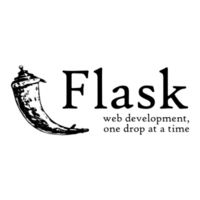Should I continue learning Django or take this Spring opportunity? I have been coding in python for about 2 years. I am currently learning Django and I am enjoying it. I also have some knowledge of data science libraries (Pandas, NumPy, scikit-learn, PyTorch). I am currently enhancing my web development and software engineering skills and may shift later into data science since I came from a medical background. The issue is that I am offered now a very trustworthy 9 months program teaching Java/Spring. The graduates of this program work directly in well know tech companies. Although I have been planning to continue with my Python, the other opportunity makes me hesitant since it will put me to work in a specific roadmap with deadlines and mentors. I also found on glassdoor that Spring jobs are way more than Django. Should I apply for this program or continue my journey?
I would recommend you change and get the easy path, but there's no easy path. When you are working in something like development you have to learn every day, stick with a specific niche, learn from others to apply to yours, and improve to be a specialist. If Spring and Java are technologies you're not enjoying, why are you going to waste your time with them? If you check the market, the higher salaries are in the specialization. For example, I was sticking with Erlang and Elixir in high volume, high availability, and concurrent systems. Don't check the number of works about Python, Java, or whatever else, you only need one job, and you have no idea about the quality of these. Most of the demanding jobs for Java, Python, and PHP are usually not covered because they request a lot and pay too less. Believe me, there are not a lot of Erlang and Elixir jobs and I always found one. And finally, don't expect too much from big companies, they are all glamorous from the outside, but they are usually a deception when you start working for them.
fully agree. It's like that misconception that, just because there are more questions and answers about X than about Y on StackOverflow, X must be more popular. Maybe X is just more stupid by design and therefore people have to ask more and Y is just so cleverly constructed that you don't run into dead ends so often. I recently had to write an App in Kotlin and boy did I have to google for the simplest most obvious things _all_ _the_ _time_, which was weird to me coming from Python. (PS: I did enjoy Kotlin, generally speaking - they have some nice concepts.)
Hi Mohamed, I love Django for its "batteries included" philosophy, meaning that you get the backend for free and a lot of stuff for database abstraction. But often you just need some kind of webserver backend logic and Django is oversized for that purpose. In that case I go with Flask which has a modular approach so that you need to gather the parts yourself that you need. If you come from a Python background I think there is a lot to explore with Python for the web and it very well into the data science landscape.
it will always amaze me, how someone experience in Django can go back to something so basic as flask.









